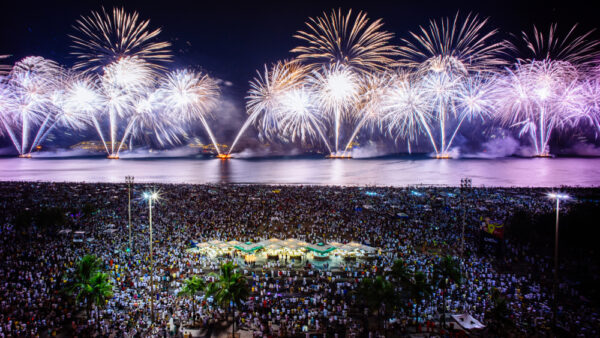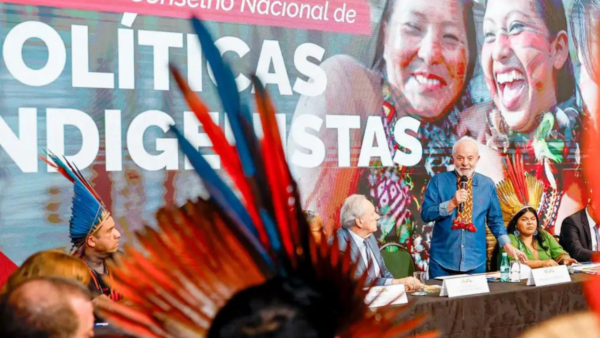On November 15, 1889, a group of military personnel seized the Imperial Government of Pedro II and ended the monarchy, 67 years after our independence from the Portuguese colonial powers. Several factors caused the imperial family to lose popularity among Brazil’s rural elite: there were conflicts with the Catholic Church, which was subordinate to the crown; a deep economic crisis; the end of slavery in 1888; and the request for more autonomy from provinces like São Paulo and Minas Gerais. But the political-military coup that turned our country into a republic nearly didn’t occur.
Pressured by sectors of the army and the republican movement to lead a deposition of the monarchy, Field Marshal Deodoro da Fonseca was initially hesitant. A monarchist throughout his life, Deodoro highly respected the “old man,” as he called the Emperor. When military forces overtook the government’s palace, Deodoro defended an overhaul of the cabinet rather than a complete dissolution of the crown. Yet as the day wore on, he gave into pressure and, as a result, became Brazil’s first President.
The dethroning of Pedro II was a movement orchestrated by the Brazilian elites of the time, and was undertaken without popular endorsement. In fact, to avoid protests, the imperial family was exiled from Brazil in the middle of the night. According to historical accounts, Pedro II, when placed on a ship to Europe, exclaimed: “I’m not a runaway slave, I’m not getting on board!”
The first republican period in Brazil’s history was strikingly similar to a monarchy. Values such as popular voting, universal education, citizenship, and inclusion were never part of the agenda. The first few years after the Proclamation of the Republic have indeed become known as the Sword Republic because of the prominence of military leaders. Deodoro da Fonseca, an ailing elderly man, resigned before the end of his term and was replaced by yet another field marshal, Floriano Peixoto, a despotic man who would become known as “the Iron Marshal.”
When more power was handed over to civilian populations in 1894, the power balance was just as it had been since the Empire. The president had little power to run the country, and obeyed instead the rural aristocracy from which all Brazilian presidents of the time were issued. Power often oscillated between oligarchies in São Paulo and Minas Gerais. The period is colloquially referred to as café com leite – that is, the ‘coffee with milk’ period, named after the two main products from the ruling states.

Until this point, many Brazilians lived in communities under a system resembling a feudal aristocracy. Latifúndios, large portions of privately owned land, concentrated most of Brazil’s land and wealth into the hands of a few hundred oligarchs. The first decades of Brazil’s Old Republic were marred by conflicts related to land and civil rights.
The increase of European settlers coming over in the early years of the 20th century also caused problems for Brazil. With a very conservative leadership and concentration of power, the new arrivals caused friction by bringing ideas of communism and anarchy to the working classes. By 1917, Brazil had its first General Strike. Laborers, led by Ruy Barbosa, demanded better rights; Barbosa was a main opposition leader who advocated for a copycat approach to the USA. The Strike was brutally repressed, with Brazil’s government acting in the hopes of repressing any similar social movements.
But developments in manufacturing and Brazil’s influx of migrants had generated an inevitable change: the emergence of a new class of urban workers in professions including banking and government. With them, power structures had changed, leaving coronelismo and café com leite politics dwindling behind. The middle class and popular dissatisfaction grew in tandem. At the same time, friction between political groups from São Paulo and Minas Gerais weakened the rulers of the Old Republic.
From this picture emerged Getúlio Vargas, a Rio Grande do Sul-born lawyer and politician. He climbed the political ladder during Brazil’s restless first period as a Republic until 1930, when he took control of the country by force. According to several historical accounts, an ally of his coined the phrase ‘Façamos a revolução antes que o povo a faça’. The saying, which translates to “Let’s make a revolution before the people do”, is pretty indicative of Vargas’s style of governance.
Journalist Laurentino Gomes, who has written about the Proclamation of the Brazilian Republic, likes to say that the republic was actually proclaimed in 1984 when the Brazilian people – for the first time in their history – led a political movement asking for the end of the military dictatorship and the creation of a direct elections system.
The Brazilian Flag
In school, Brazilian children learn that the colors of our flag represent the riches of the country: green for the forests, yellow for the gold, blue for the skies, and white for peace. And yet everything about this explanation is incorrect. The Brazilian republican flag is actually modeled after the monarchy’s flag. The green rectangle represents the House of Bragança, the Portuguese Royal Family, while the yellow represented Austria’s Habsburg family, the house of Empress Maria Leopoldina.
After the proclamation of the Republic in 1889, the imperial coat of arms at the flag’s center was replaced by a blue disc, with stars representing each state, and the national motto: Ordem e Progresso (“Order and Progress”) – something we borrowed from Auguste Comte’s motto for positivism: “Love as a principle and order as the basis; progress as the goal.”











 Search
Search






































